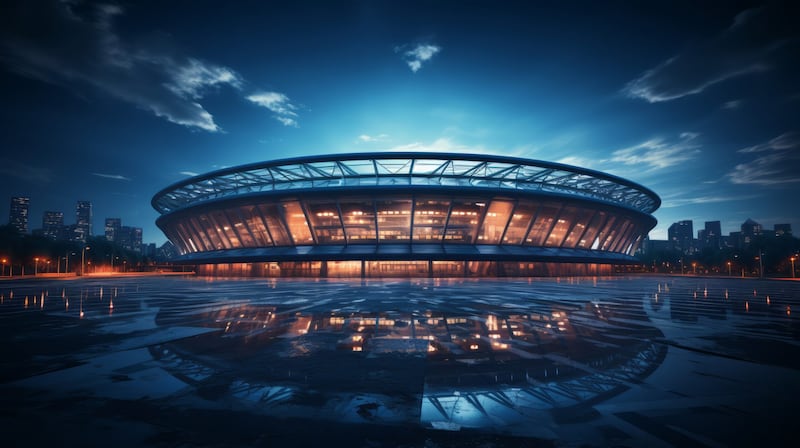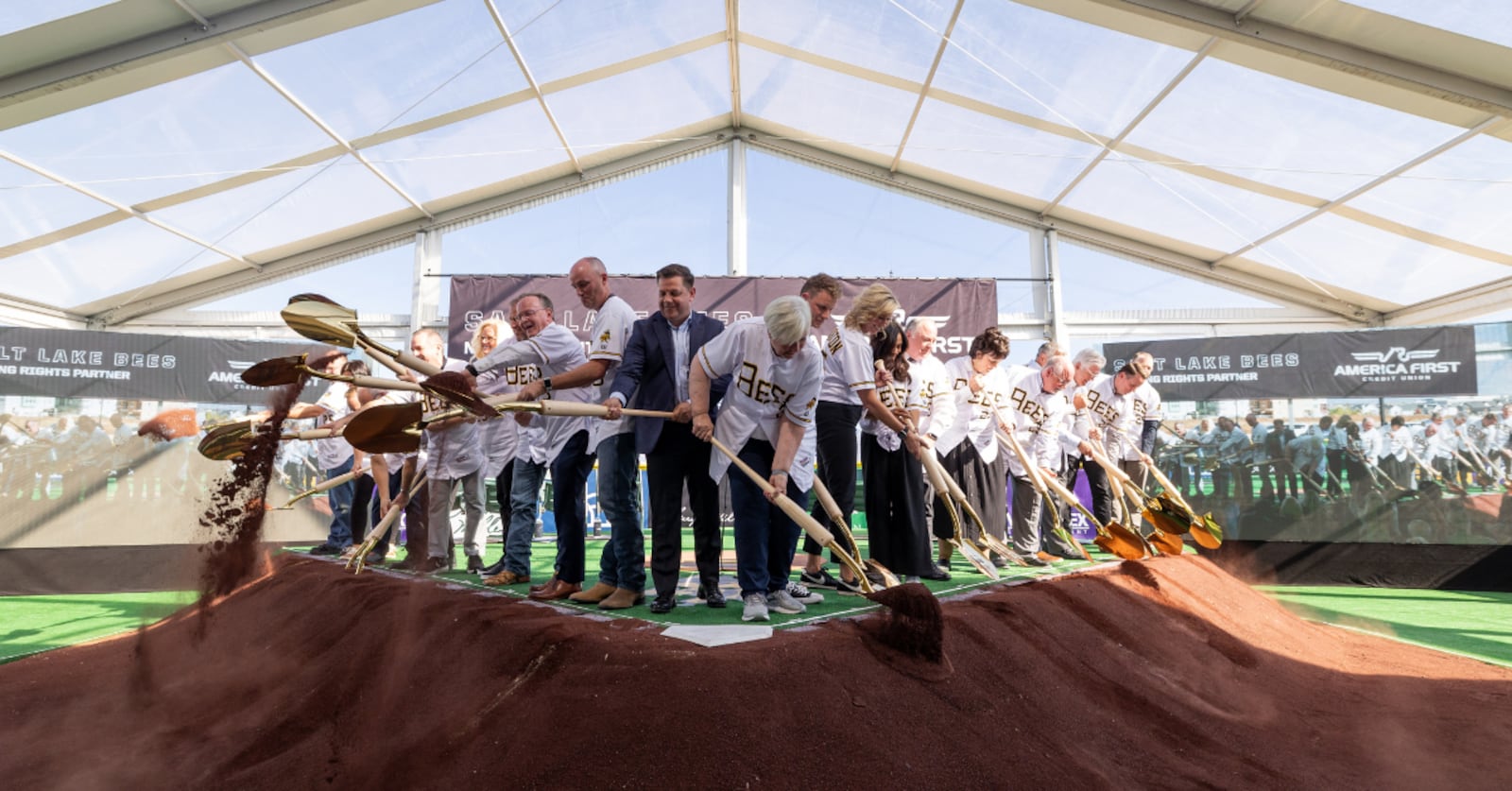This story appears in the 2024 Advisor, a publication sponsored by Colliers Utah.
“Unrecognizable.”
That’s the word Larry H. Miller Real Estate President Brad Holmes uses when imagining what Utah might look like in the next 10 years—and the reason why will likely perk up the ears of those who turn to the evening news just for a recap on the Utah Jazz game or a soundbite from a college football practice.
If you’re a sports fan in Utah, you’re likely feeling excited about what’s to come. Some of the state’s leading figures say sports will have an enormous impact on the look and feel of Utah’s next chapter, especially through the lens of real estate development. It’s been widely reported that the Salt Lake City market is being considered for potential expansion of the National Hockey League and Major League Baseball. The Utah Jazz is reportedly exploring options for either a new arena somewhere in the Salt Lake Valley or to revamp the area immediately around the downtown Delta Center. The minor league Salt Lake Bees will relocate to a new sports-anchored mixed-use development in South Jordan’s Daybreak neighborhood. Plus, Salt Lake has been earmarked as the preferred venue for the 2034 Olympic and Paralympic Winter Games.
“It’s an exciting time,” says The Larry H. Miller Company CEO Steve Starks. “To me, I think it tracks the growth of the state in a lot of different ways: our population, our economy, our high quality of life. It’s great that we’re in all of these conversations.”
Learning from other big league cities
Of course, getting to where Utah could be a decade from now will take a lot of work and thoughtfully executed development. Those in the thick of it have found inspiration and guidance by looking at other “big league cities” around the country.
Colliers Utah Executive VP and Partner of Retail, Land and Investment Stuart Thain points to the downtown scene in San Diego as something he would love to see replicated in the Beehive State.
“You look at Petco Park in San Diego—when they opened up the ballpark downtown, it totally revitalized the Gaslamp district, and everything else was a boon for them,” Thain says, referring to the resurgence of shopping, dining and nightlife that emerged near the Padres’ stadium when it was completed in 2004. “I think if it’s done right here and it’s in the right location, something like that could really be a huge deal for the people of Utah.”
Since its opening in 2017, The Battery Atlanta—which sits adjacent to the Braves’ home field, Truist Park—has been celebrated as the model of sports-anchored mixed-use development projects. Big League Utah, the coalition rallied by The Larry H. Miller Group to bring an MLB franchise to Salt Lake, hopes to bring similar success with the Power District, the development proposal central to its efforts.
Having visited and closely studied The Battery Atlanta, Starks and Holmes are confident that Big League Utah can pull off its own version of what the Braves have to offer. And in Utah’s case, the Power District’s location—set near the Utah State Fairpark on the west side of Salt Lake City—is unmatched.
“We think it’s the most accessible site in the entire Wasatch Front,” Starks says. “It’s close to the airport and is right between I-15 and I-215 and right off I-80. There’s a TRAX station right in front of the property. It’s minutes away from downtown. Whether you’re coming south from Davis County or Weber County, north from Utah County, from anywhere in Salt Lake County or even west from Tooele, you can get there very easily.”

Breaking new ground in Daybreak
For now, Big League Utah’s MLB dreams are just that: dreams. But the first game-changing sports development in the state, the Bees’ move to Daybreak, is full-steam ahead.
Following the 2024 Minor League Baseball season, the Bees will head southwest to a new home to anchor what The Larry H. Miller Group lauds as a state-of-the-art entertainment district. When Downtown Daybreak gets its full introduction to the community in 2025, it will be Utah’s first sports-anchored mixed-use development space.
But while baseball will be the centerpiece of the project, the commercial real estate opportunities around the future ballpark in Daybreak will be exciting in their own right. Restaurants, storefronts and unique office spaces will create an unavoidable buzz in the Salt Lake suburbs. One office building in the future development will even offer a view into the ballpark, giving its future tenants a one-of-a-kind amenity.
“What retailers, food and beverage companies, and other companies are trying to capture is peoples’ time,” Holmes says. “To have amenities that make someone feel comfortable spending two or three hours in the vicinity of good food, good shopping, good housing, a good place to work; we have all these things that can activate this center 300 days a year.”
A decade from now
For the moment, Utah’s sports-anchored future has yet to materialize. While Ryan Smith—the majority owner of the Utah Jazz and Smith Entertainment Group—has been quite vocal about his interest in bringing the NHL to Utah, it would likely require a new, larger arena for both that team and the Jazz. And, competing with a few other U.S. markets for the rights to a major league baseball team, The Larry H. Miller Group says the site at the Power District is “shovel ready” if and when the MLB gives the green light.
Starks is confident that there will be plenty to celebrate a decade from now.
“In 10 years, we’ll be finishing up hosting our second Olympic Winter Games, which will be an incredible catalyst for our community on the world stage again,” he says. “And within 10 years, hopefully, we’ll be playing our fifth or sixth season of Major League Baseball. At that point, we’ll have developed a crop of players that are coming into their own. Hopefully, we’ll be close to raising a World Series trophy in Utah.”
Regarding sports and commercial real estate in Utah—and as the line goes in the iconic ballpark-building blockbuster, “Field of Dreams”—“if you build it, they will come.”


